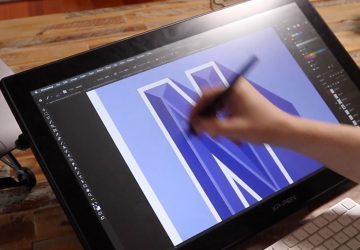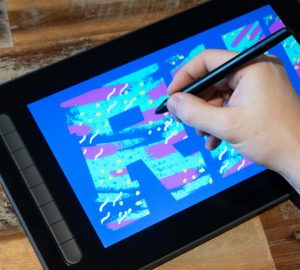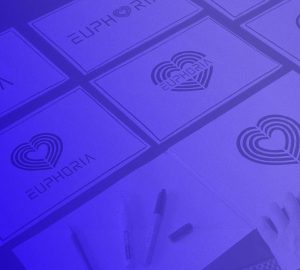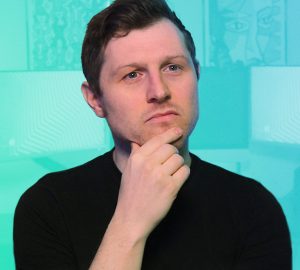So, you’ve decided you want to be a design recruitment agency freelance designer. You know what it is, you know how it works, you know you’ve got the qualities, but there’s one thing you’re still unsure of… Do you have the skills?
By this point you know that there are some serious perks to being a freelance designer. There’s the independence, the autonomy, the flexibility and the income. It all sounds pretty good, but let me tell you, it’s not for everyone. Anyone can try freelancing, but there are certain skills you need in order to be successful at it.
1 – You need to work fast
As a freelancer, you’ll be working contracts and being paid by the day. Typically these contracts will be for a fixed period, which could be a few days, weeks or months. The clients aim is to complete the job within a set budget and timeframe. So, you’ll be under pressure to work at a swift pace to deliver your work quickly and to a good standard.
Remember, you’re a temporary employee, not a permanent one, so you don’t have the freedom of delays and extended time scales. Deadlines must be met or you may be asked to leave the project so the client can get someone in who can meet the deadline required.
Those freelancing with design recruitment agencies are used to these shorter timeframes as they frequently deal with short contracts. When I first went freelance, I’d sometimes have just a few days to get a big job done. This was tough at first as I wasn’t used to such strict deadlines, however, over the years I’ve done it so many times that I’m quite used to the pressure.
This type of pressure and experirence has made me a more proficient and organised designer. It’s caused me to develop a design process that can be altered depending on the timeframe of the project. I probably still would have developed this process without the time pressures, but I doubt it would be so refined or adaptable.
The reward for doing a good job in any timeframe is more than gratitude. It’s a reputation with the agent and the client that may help you get more work in the future.
2 – Generate lots of ideas
Now this is something that senior creative staff and clients respond really well too and kind of expect. If you want to make a big impression and stand out, this is something you will want to do.
Staff and clients really like a variety of ideas because it shows you have thought deeply about the subject matter and that you can offer multiple creative solutions for them to consider and discuss.
It shows that you’ve done a thorough job, gone the extra mile and that you’re passionate about your work. So it really helps to show a variety of design ideas.
Now, this could include developing any design ideas requested initially from the client or design staff. However, you also want to show your own ideas that you have developed through your own process. This a chance for the designer to make an impression.
In my experience, this could be anything from 3-6 routes depending on the quality of my discovery and the strength of the ideas. I will typically generate multiple routes on a project and then edit them down into a selection of the strongest.
3 – You will need a creative process
This is what separates the professionals from the amateurs. To inspire confidence in the client or staff, you will want to demonstrate exactly how you’re going to tackle the project. In my experience, this allows me to take ownership and command my own design process.
You want to avoid creating arbitrary design. You’ll want to demonstrate to your contractor and client that you’ve really thought about the brief and done the most to develop a creative solution.
The creative process varies for each designer, however, the main aim is to serve as a reference to effectively carry out a certain set of procedures. These procedures ensure the most innovative and fresh ideas can be discovered and produced during the execution of a project.
A process will include steps to ensure you undertake adequate research, discovery, development, design and implementation. The creative process is like a blueprint or formula that can be loosely followed, to help guide a designer through a project so they’re not lost or worried where to start or what to do next.
A process can include many or few steps. Once a designer has one, it will be much easier to deal with tight deadlines, proceed effectively, make swift progress, and ensure adequate work is done.
In my experience working on all sorts of projects with all sorts of time frames, I have developed an effective process that works really well for me. I use this as a guide which I follow on every project, be that with tight deadlines or a longer deadline, to help me generate fresh and interesting design.
So to produce the best and most innovative and fresh ideas you will need a creative process.
4 – Make ideas happen
Now, it’s not always the case but sometimes there just isn’t a project manager around or someone who takes ownership of a project, to make sure things are going as planned or progressing. In this instance a freelancer may be left with no direction or clue as to what to do next.
Deadlines can be tight, so a freelancer needs to be prepared to take the reins and make ideas happen. A freelancer will need to show initiative and chase whomever is involved to ensure the task at hand is being addressed.
This could be anything from creating a project brief if one isn’t in place at the start of a job, making sure the right people see work and give feedback, working with other designers to make sure their involvement is going well, or working with printers to arrange a print job.
In my experience, it can be frustrating when you have a deadline and there is no one around with guidance or feedback. In these instances you just have to get on with it and deliver, otherwise deadlines are going to be missed.
On many occasions I have had to take responsibility for my own time and a project to make sure it progresses and work gets developed.
5 – Good communication skills
Now this is as important on the job as it is out of the job. This is a big one and covers two sides to your freelance career:
- The process of finding work
- Presenting your design
To get work as a design recruitment agency freelancer, you will be working through agencies and will need to put a lot of time into networking and liaising with agents. A new freelancer will attend lots of interviews to register with design recruitmen agencies. This is an opportunity to present yourself in the best light to an agent so they can match you to prospective projects.
Even when established, a lot can go into just setting up a contract. A freelancer will typically have to deal with a lot of correspondence and phone calls, letting agencies know they’re free, chatting about new opportunities, then discussing the job and negotiation.
And it doesn’t stop with the agents either. Sometimes it’s not enough for a client to see a portfolio of work. For more senior roles the client may want to have an interview first. In my experience, I’ve had both phone interviews and visited the client face to face. It’s at this time you really need to make an impression.
Once on a job, your work will predominantly be visual. However, there will be many times where you will be required to communicate your ideas verbally to discuss and sell them to others at meetings, pitches and presentations.
You’ll need to be able to talk through your ideas in a clear way, as often you will be presenting to non-designers. The greater your ability to communicate and articulate your ideas, the more successful you will be.
6 – Good presentation skills
As with the previous point, this covers two sides to your freelance career:
- Presenting yourself
- Presenting your design
To get work, you’ll be working with design recruitment agencies who will put you and other designers forward for jobs. You need to stand out from the competition to the client with your portfolio.
As a freelancer you will constantly be updating your portfolio, your website or perhaps posting on social media platforms. A freelancer needs to do a really good job at this to stand out and maximise chances of getting work.
You’re never going to know the dynamics of any given circumstance and how you are going to present your design in a freelance job. This could be 1:1 with a senior member, it could be 1 to many in a boardroom. It could even be a team presentation to a client or a video call. I’ve even had to deal with clients not only locally, but also abroad.
It’s always best presenting design face to face where possible, but sometimes I’ve had to send PDFs to clients abroad, such as to India and the US. In this case, a presentation would essentially have to speak for itself.
A design recruitment agency freelancer needs to be adaptable and prepared to present in any given situation.
7 – Good time management
Now, as we know, it’s common for freelance contracts to be short and deadlines to be tight. Depending on the scope of work, the freelancer will need to make sure they’re spending adequate time on research, design and implementation.
Depending on the time a freelancer has on a project, they will need to manage their time on each section well in order to cover all the ground necessary, to deliver a creative solution to a high standard.
In my experience I have a responsive workflow. This is where the creative process comes in. As mentioned earlier I have a process which I always work to. This process allows me to have a responsive workflow, where I can allocate a certain amount of time to each part.
The time allocated varies depending on the length of the project. The longer I have, the longer I will allow for each part of the process. This way I know I am covering everything to develop my creative solutions to the highest standard.
8 – You need to be proficient on the computer
Now this one goes without saying, but it needs to be stated in this list. In this day and age you can’t be a designer without knowing how to use a computer. But it’s not just basic computer skills required.
A freelance designer must be able to use a computer and all the software tools that allow them to bring their designs to life. They must be able to do this swiftly and efficiently to ensure they produce creative results in the required timeframe.
Understanding how to use this software will make the whole process a lot less stressful for the freelancer to create work.
9 – Good negotiation skills
As a freelancer gains experience and has a couple of good projects under their belt, their worth will go up. At some point the freelancer will want to raise their day rate to match their worth.
This typically goes hand in hand with the jobs a freelancer will undertake. As a beginner with little experience, a freelancer can only command the junior rates. However, as a freelancer starts to climb the ladder, build a reputation and get the chance to take on more senior roles, they can start to command a higher day rate.
Now this can be a little tricky. You’ll be listed with your agency at a particular rate and, as such, they will offer you a certain type of role matching that rate.
It’s here where a freelancer will need good negotiating skills. The freelancer needs to communicate with their agent that they feel they’re ready and qualified to take on more senior roles and raise their day rate. A freelancer will need to be confident and assertive with what they feel they are worth.
Now, there can sometimes be push back from the agent. Sometimes an agent will state that the client doesn’t have the budget, to which a freelancer will have to decide if they wish to negotiate a compromise.
In some instances, if a freelancer raised their rate it could eat into the agents commission, so they will want to keep your rate down. The freelancer must be clear and state their rate before agreeing to proceed with a contract, so there’s no confusion up front.
Over the years I have had to negotiate my day rate several times. Since starting as a freelance designer, my day rate has tripled. I still get propositions today for work, though if it’s below my rate or it’s a role I’m not interested in, I just respectfully decline.
10 – Good networking skills
A freelancer should always be looking to connect with people, as you never know where these connections can lead. This can also be a good source for a reference for your portfolio, CV, website or future jobs.
The internet and the vast amount of social media platforms make networking today much easier than it used to be.
Now this is not about putting your work up online for everyone to see. This is about you reaching out to people and making a connection, having a conversation and making something happen.
If you attend an event, capitalise on the people in the room. Be sure to introduce yourself and offer your services if the conversation arises. If not, at least connect with them afterwards or ask for their business card.
A freelancer should be networking online and offline whenever and wherever possible. A job can be just an email away. I’ve had job offers through both LinkedIn and my YouTube channel, so you really need to keep on top of your online presence.
To Recap
Skills you will need to be a design recruitment agency freelancer:
- You need to work fast
- Generate lots of ideas
- You need a creative process
- You need to make ideas happen
- Good communication skills
- Good presentation skills
- Good time management
- You need to be proficient on computer
- Good negotiation skills
- Good networking skills
Now, those are just 10 skills you need to be a freelance designer with design recruitment agencies. Do you have these skills? Do you think there are others that are more important? Let me know in the comments below.








